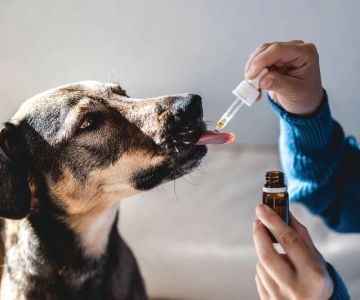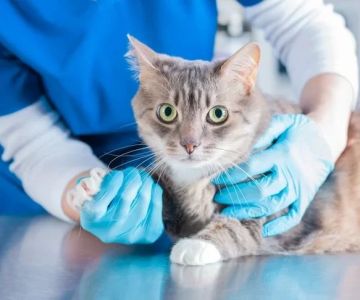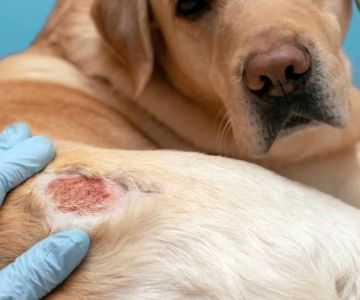Common Cat Illnesses: Symptoms, Diagnosis, Treatment
- Understanding Common Cat Illnesses
- Common Cat Illness Symptoms
- Diagnosis of Cat Illnesses
- Treatment Options for Cat Illnesses
1. Understanding Common Cat Illnesses
Cats, like all pets, can experience a range of health issues. Some of these illnesses are more common than others, and being able to recognize their symptoms early is essential in providing your cat with the best care. Understanding the most frequent cat illnesses, their causes, and how to handle them is an essential part of responsible pet ownership.
1.1 Types of Common Cat Illnesses
Common cat illnesses can range from mild conditions to serious diseases. Some illnesses are linked to the environment, such as infections from bacteria or viruses, while others may be genetic or age-related. A few of the most common cat illnesses include:
- Upper respiratory infections (URIs)
- Kidney disease
- Feline lower urinary tract disease (FLUTD)
- Diabetes
- Hyperthyroidism
- Dental disease
Understanding these conditions is crucial for detecting any warning signs early, which can lead to quicker treatment and a better outcome for your feline friend.
2. Common Cat Illness Symptoms
Symptoms of cat illnesses can vary widely depending on the type of illness. Some conditions cause very subtle changes in behavior, while others are more immediately obvious. Below are some of the most common symptoms to watch for in your cat:
2.1 Changes in Appetite or Drinking Habits
One of the first signs that your cat may be unwell is a change in eating or drinking habits. Cats that are sick may eat significantly more or less than usual, or they may stop eating altogether. Increased thirst is also common in diseases like diabetes or kidney disease.
2.2 Lethargy or Decreased Activity
If your usually active cat suddenly becomes lethargic or spends more time sleeping than usual, it could indicate an underlying health issue. Cats that are sick may also withdraw from social interaction and become less interested in playing or engaging with their environment.
2.3 Vomiting and Diarrhea
Vomiting and diarrhea can be signs of various cat illnesses, such as infections, parasites, or gastrointestinal disorders. While occasional vomiting may not be a cause for concern, frequent or persistent vomiting and diarrhea warrant a visit to the vet.
2.4 Respiratory Issues
Upper respiratory infections (URIs) are common in cats, especially in those with weakened immune systems or those living in multi-cat households. Symptoms include coughing, sneezing, nasal discharge, and labored breathing. If your cat exhibits these symptoms, it's important to get them evaluated by a veterinarian as soon as possible.
3. Diagnosis of Cat Illnesses
If you notice any of the symptoms mentioned above in your cat, it’s essential to seek veterinary care promptly. Diagnosing cat illnesses requires a combination of physical examinations, medical history, and diagnostic tests.
3.1 Physical Examination
During a physical exam, your veterinarian will check for signs of illness such as abnormal heart rate, fever, or pain. They will also evaluate your cat’s weight, coat condition, and overall appearance. A thorough exam is often the first step in diagnosing an illness or condition.
3.2 Diagnostic Tests
If your cat’s illness is not immediately obvious, your vet may recommend diagnostic tests to get to the root of the issue. Some common tests include:
- Blood tests to check for infections, organ function, or underlying conditions like diabetes or hyperthyroidism
- X-rays or ultrasounds to examine internal organs
- Urine tests to evaluate kidney function and detect urinary tract infections
- Fecal tests to check for parasites
These tests help veterinarians make an accurate diagnosis and recommend appropriate treatment for your cat's specific condition.
4. Treatment Options for Cat Illnesses
Once a diagnosis has been made, your veterinarian will discuss the available treatment options for your cat’s illness. Treatment will vary depending on the nature and severity of the condition. Below are some common treatment methods used for feline health issues:
4.1 Medications
Many common cat illnesses can be treated with medications, such as antibiotics for bacterial infections, antihistamines for allergies, or thyroid medications for hyperthyroidism. Your vet will prescribe the appropriate medication based on the diagnosis, and it’s important to follow their instructions carefully to ensure the best outcome for your cat.
4.2 Surgery
In some cases, surgery may be required to treat a cat's illness. For example, surgery is often needed for conditions like bladder stones, tumors, or certain types of dental disease. Surgical procedures should always be performed by an experienced veterinarian and require post-operative care for a successful recovery.
4.3 Lifestyle and Dietary Changes
For some conditions, especially chronic illnesses like diabetes or kidney disease, changes in diet or lifestyle may be necessary. Your vet may recommend a special diet, increased water intake, or even daily monitoring at home. It’s important to stick to the vet’s instructions to manage these conditions effectively and improve your cat’s quality of life.
4.4 Preventive Care
Prevention is always the best approach to maintaining your cat's health. Regular veterinary check-ups, vaccinations, parasite control, and a balanced diet can help prevent many illnesses. In addition, maintaining good hygiene and providing your cat with a safe and stress-free environment can significantly reduce the risk of infections and other health issues.
At Hidden Brook Veterinary, we offer comprehensive veterinary care for cats and other pets. Whether your cat is showing signs of illness or you want to ensure they stay healthy, our experienced team is here to help. Visit our website for more information on services, products, and expert advice for your cat’s health and well-being.












